My Cultural Diet for July 2023: Mission: Impossible, Philip Yancey, Indiana Jones, Mister X, G.I. Joe

In order to better track my various cultural experiences (e.g., movies, TV shows, books, restaurants), I’ve created the Cultural Diet. Think of it as my own personal Goodreads, Letterboxd, and Yelp, all rolled into one (more info here). Every month, I recap everything that I watched, read, etc., in the previous month.

As I left the theater, I wasn’t sure I liked Oppenheimer at all. It’s technically impressive, but what else would you expect from Christopher Nolan? It’s helpful, though, to realize that Oppenheimer is as much about J. Robert Oppenheimer’s public fall and political disgrace as it is about the atomic bomb, if not more so. Which might explain why the actual Trinity test, which the first two-thirds of the film inexorably builds up to, feels surprisingly anticlimactic, especially when compared to the surreal visions that often plague Oppenheimer. Nolan’s film walks a fine line between lionizing Oppenheimer’s brilliance and ambition and excoriating his pride and moral failings, and I’m not sure it does so successfully. Subtlety isn’t Nolan’s strong point, and so he reminds you — over and over — that Oppenheimer was complicated; he inspired scientists around the world and oversaw one of humanity’s most ambitious projects even as he failed his wife and children. It’s a bit of a mess, frankly, on this first viewing, and Nolan’s exposition-heavy dialog doesn’t help. That said, Nolan’s films are often growers (e.g., Tenet), so I wouldn’t surprised if I become more appreciative after repeated viewings. Finally, I’d be remiss if I didn’t mention Matt Damon’s standout performance as Leslie Groves, the general in charge of the Manhattan Project. Damon stands out amidst the film’s packed cast, and his scenes with Cillian Murphy’s Oppenheimer crackle with an energy that’s sorely lacking elsewhere.
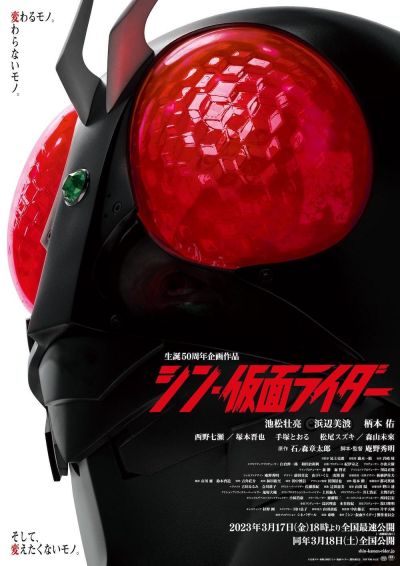
First, there was 2016’s Shin Godzilla, followed by 2022’s Shin Ultraman. And now with Shin Kamen Rider, Hideaki Anno completes his trilogy of rebooting his childhood favorites. Like Shin Ultraman, Shin Kamen Rider can feel like a tokusatsu parody, albeit by someone who clearly loves the genre. However, Shin Kamen Rider relies on the viewer being familiar with the original franchise to a much greater degree than the other Shin films — and I have very little knowledge of Kamen Rider. Thus, the film felt very abrupt, like it assumed I already knew what was going on and didn’t need to explain itself. (Which sort of makes sense, since it’s remaking the original 1971 Kamen Rider series.) Obviously, your mileage may vary, and if longtime Kamen Rider fans pick up on easter eggs or find themselves laughing knowingly at certain scenes, poses (oh man, are there so many poses), or lines of dialog, then more power to them. I did enjoy the movie’s action, which employed CGI, animation, and more gymnastics than a Summer Olympics. The campiness and over-the-top-ness alike were nice rejoinders to the superhero action we see via the MCU and DCEU (and a lot gorier than I was expecting). This being an Hideaki Anno property, it’s hard not to look for Evangelion-isms, and indeed, the conspiracy our masked hero must fight against had shades of Human Instrumentality, but Shin Kamen Rider isn’t nearly so grim and apocalyptic. And weirdly, the ending reminded me, of all things, of Joss Whedon’s Dollhouse.
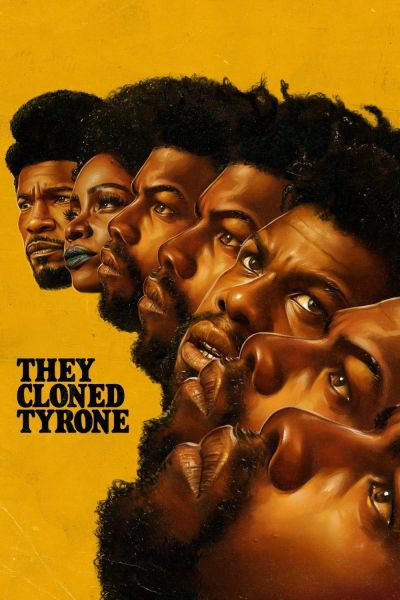
John Boyega, Teyonah Parris, and Jamie Foxx play a drug dealer, a prostitute, and a pimp who stumble across a secret government conspiracy to keep Black people in a state of compliance. On its surface, They Cloned Tyrone might seem a little too on-the-nose. But then you read about educators whitewashing American history and claiming that slavery was actually beneficial to Black people and suddenly, They Cloned Tyrone seems nigh-prophetic. Directed by Juel Taylor in his directorial debut, They Cloned Tyrone doesn’t always juggle its tonal shifts between sci-fi, absurdist comedy, and drama, but you have to respect the commitment of Taylor and his cast. Foxx is particularly fantastic as the larger-than-life Slick Charles who slowly realizes that his life is a lot smaller than he thought; it makes you thankful that Foxx survived his health scare earlier this year. Meanwhile, Parris’ love of Nancy Drew and home remodeling is delightful, and Boyega makes it clear just how under-utilized he was in the Star Wars franchise.
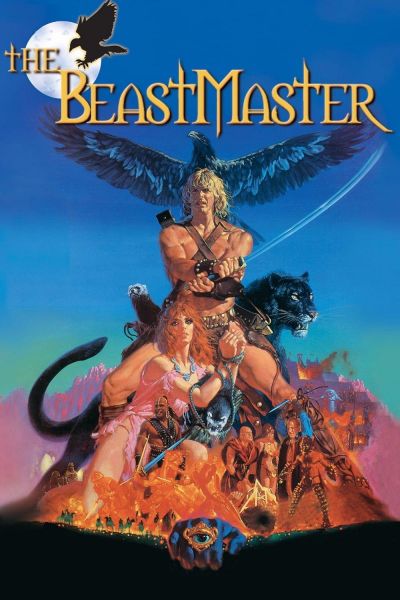
When I was in 6th and 7th grade, the recently launched KPTM TV station made up for its dearth of original programming by showing lots of old movies. One of those movies was Don Coscarelli’s The Beastmaster, starring Marc Singer as a well-oiled warrior who uses his ability to communicate with animals to battle an evil cult. I never made it too far into the movie back then, mainly because the bird people freaked me out. Watching it now, though, it’s actually kind of charming. Don’t get me wrong; The Beastmaster is cheesy in a very MST3K kind of way, but there’s something refreshing about its lack of sword-and-sorcery pretensions. (And it’s certainly better than, say, the Ator movies.) I mean, you’ve got a muscular dude running around the wilderness in a loincloth with a tiger and eagle in tow, rescuing a beautiful maiden played by Tanya Roberts and fighting his enemies with a huge sword and some kinda-sorta martial arts. My inner twelve-year-old loves that stuff, but the adult me can appreciate Coscarelli’s scrappy filmmaking, which made the most of what he had. (Coscarelli is also the man behind such cult classics as the Phantasm series and, of course, Bubba Ho-tep.)
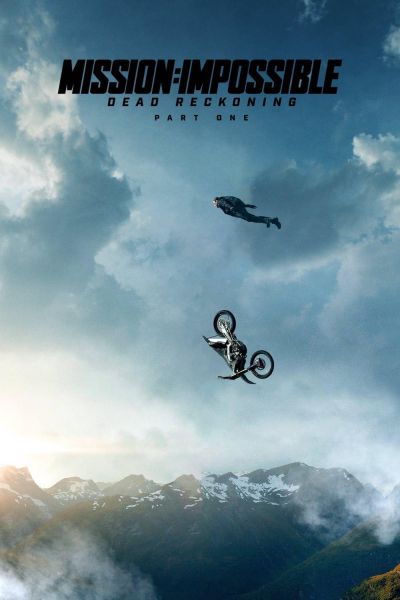
First, the bad. I can’t remember the last time I saw a movie this over-edited. Editing is essential in action cinema, but some fight scenes were rendered nigh-illegible (e.g., the alleyway fight with Pom Klementieff’s assassin and another goon). The dialog-heavy scenes were worse, though. One scene in particular, an info dump about the movie’s BBEG (an AI known simple as “The Entity”), was reduced to a barrage of exposition by the editing that kept cutting on every single sentence. And I hate to say this, because the Mission: Impossible movies are some of our finest modern action movies, but the action was surprisingly tedious at times, much like the recent Indiana Jones movie. I’m thinking specifically of the car chase in Rome, though to its credit, it had some humorous beats that were sorely lacking in Indy’s film. And finally, the movie did my favorite character dirty (though this being a Mission: Impossible film, I hope they’ll be back). All that said, I still enjoyed Dead Reckoning Part One thanks to Tom Cruise’s total commitment to one-upping himself. (Sidenote: The dude’s 61 years old!) The film’s centerpiece, in which Cruise drives a motorcycle off a cliff, gave me some vertigo (a good thing) and the AI-centric plot felt very apropos given current headlines. But I liked the preceding films, 2015’s Rogue Nation and 2018’s Fallout, a lot more.

Part of a crop of early/mid ’00s anime that told downbeat, darkly philosophical tales, Ergo Proxy errs a bit too far on the side of philosophizing. (Heck, it has characters named after Ignatius of Loyola, Jacques Derrida, and other famous philosophers.) Its dark, dystopic storyline is existential in the extreme, and as a result, the series often seems far more interested in posing philosophical quandaries than actually telling a cohesive, captivating story filled with characters that you care about. Technically speaking, Ergo Proxy has aged pretty well; the CG-enhanced animation and character designs still look good after two decades, and Yoshihiro Ike’s moody electronic score really does enhance the series’ already considerable mood and atmosphere. Indeed, the series’ sense of style often proves more substantial than its actual substance. Which is ultimately frustrating, though, because what is gleaned when Ergo Proxy sets aside the philosophizing and just focuses on actually telling its story is really cool and intriguing. I can’t help thinking that with a bit more focus and a bit less heavy-handed seriousness, Ergo Proxy could have made its overall points in a much more affecting and entertaining manner.

I don’t mean it lightly when I say that if it weren’t for Philip Yancey, I might have abandoned Christianity years ago. Shortly after college, I went through a long period of intense doubt and bleak cynicism during which the Church seemed pointless and my own faith useless. A friend lent me a copy of Yancey’s Reaching For the Invisible God and it proved to be a lifeline. I’d never read a Christian book like it before, one that explored faith and doubt honestly and thoughtfully without devolving into condemnation or simple platitudes. In the years that followed, I read everything I could find of Yancey’s, and books like What’s So Amazing About Grace? and Soul Survivor greatly shaped my present faith. Throughout Where the Light Fell, Yancey reflects on what inspired him to write books like Reaching For the Invisible God: a Southern childhood characterized by racism and rigid fundamentalism; attending an ultra-legalistic Bible college; and most of all, a deeply dysfunctional family upbringing. Some portions of the book are chilling, particularly when Yancey recounts his mother’s harsh discipline and even harsher words for him and his older brother, and the wounds they left. Having read so many of his other books, Where the Light Fell does suffer a bit from familiarity; many of its stories appear as anecdotes in his earlier titles, albeit in more anonymous forms (something he even admits). But it’s also by turns fascinating, thoughtful, and affecting. Yancey’s memoir is consistently winsome, even when he’s plumbing the darkest parts of his past.
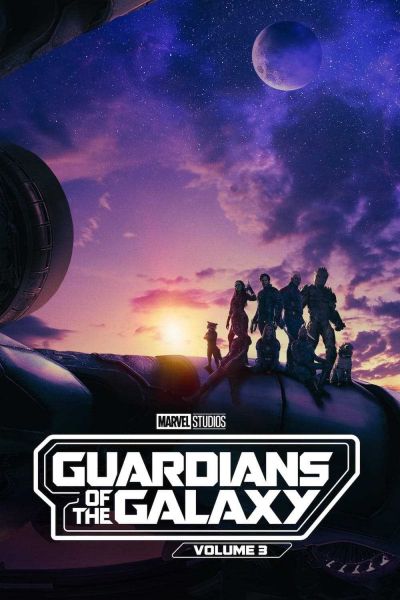
I was pretty excited when Marvel announced the first Guardians of the Galaxy movie. Not only was the MCU now embracing some lesser known characters alongside Captain America, Thor, and the Hulk, but it would be exploring Marvel’s cosmic side (i.e., my favorite side). Now, nearly ten years later, we’ve got the final Guardians movie, and it’s very much a farewell to the MCU’s scrappiest characters. Much of it’s focused on Rocket’s traumatic past — and I do mean traumatic, with some of the MCU’s darkest material to date. It is affecting at times, as the various Guardians arrive at the conclusions of their arcs — and not everyone arrives at the same place, giving the movie a gentle bittersweetness that I appreciated. Considering that the post-Endgame MCU has yet to develop any real narrative momentum (a fact that isn’t helped by the multiple assault allegations now facing its new BBEG), Volume 3 really feels like the end of an era. But even with James Gunn’s anarchic energy on full display, Volume 3 still feels like it’s checking off boxes, even — and especially — during its most emotional moments. Which is probably an indictment of the last decade’s superhero glut as much as anything.
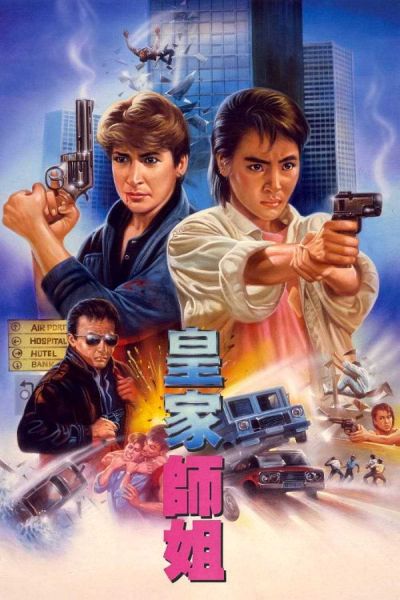
You go into Yes, Madam! expecting to see Michelle Yeoh (billed here as Michelle Khan) and Cynthia Rothrock in action as competing cops. Unfortunately, the film spends an excessive amount of time focused on the annoying hijinks and endless bickering of a trio of hapless ne’er-do-wells (played by John Shum, Mang Hoi, and Tsui Hark) who get mixed up with a hitman, his boss, and some incriminating microfilm. But when Yeoh and Rothrock do appear on-screen, watch out. The two ladies — who, of course, can’t stand each other when they first meet — are a joy to watch whenever they take on the film’s assortment of thugs and gangsters. Given that Yes, Madam!‘s a Corey Yuen film, the action is inventive and frenetic, and I rewound several scenes just to marvel at the deft moves and onscreen chaos. (I’m giving the film an extra star for the final brawl alone.) But the aforementioned hijinks are too annoying, the humor too slapstick-y (especially the police brutality), and the film ends with a tonal shift that feels more appropriate for a John Woo, heroic bloodshed-type film than an action comedy.
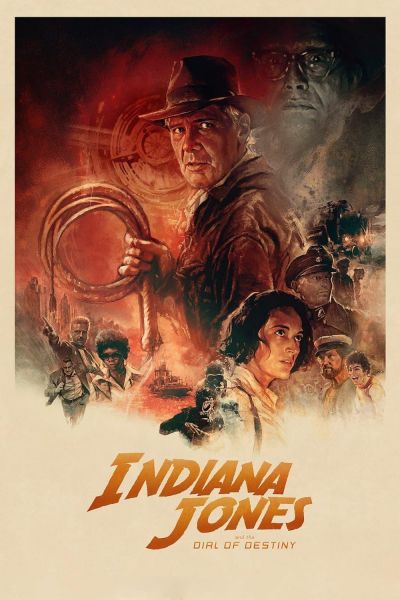
I appreciate the desire of director James Mangold et al. to send out one of cinema’s most iconic heroes in epic fashion. But Dial of Destiny is packed with so much stuff that it drags; adventurous globetrotting has never felt this sluggish. The Indiana Jones movies are famous for their rollicking action (think of Indy hanging onto that Nazi truck for dear life in Raiders of the Lost Ark or Temple of Doom’s mine cart chase), but Dial of Destiny’s major action sequences — a de-aged Indy (which actually looks pretty good) punching Nazis on a train, a tuk-tuk chase through Tangier — just go on and on and on. And on. And on some more. The film is not without delights (e.g., the always-great Mads Mikkelsen, Sallah, Antonio Banderas’ cameo) but it’s true saving grace is, not surprisingly, Harrison Ford. You can tell he wants to do right by Indy, and so he infuses the character with a sorrow that’s quite affecting, such as when Indy asks why he should stay in a world that’s passed him by or when he mourns a friend’s death. It’s just too bad the script also has him utter nonsense like “I’ve come to believe it’s not so much about what you believe, it’s how hard you believe it.” (The last few years of American politics should make it abundantly clear how utterly nonsensical that sentiment is.) Dial of Destiny is better than Kingdom of the Crystal Skull and maybe even Temple of Doom, but it could’ve — and should’ve — been so much better. Indiana Jones deserved as much for his final film.
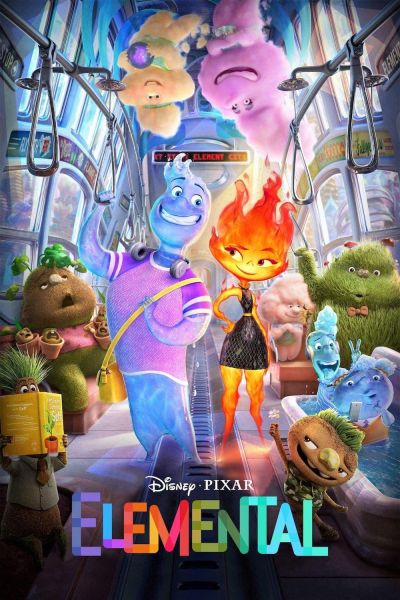
I haven’t been too impressed with Pixar’s recent output. Films like Incredibles 2, Onward, and Turning Red have their moments, but 2015’s Inside Out was their last true masterpiece. Elemental does nothing to break that streak. I went in with low expectations, so I was mildly surprised at times. (The sequence where Ember and Wade travel underwater to see the Vivisteria flowers is quite beautiful while Thomas Newman’s soundtrack has some cool non-Western elements.) However, Elemental suffers from the same issue as the Cars movies: it’s really hard to suspend disbelief with this sort of anthropomorphic storytelling. It just raises too many questions. Elemental does poke fun at that with the chain-link fence gag, but are we really supposed to believe that clouds, trees, and walking puddles built a glass city? Where did the technology come from, especially since fire is treated with suspicion, even outright hostility? And since clouds are water, can air and water elements reincarnate between each state, thus becoming functionally immortal? If I must watch an anthropomorphic tale, I’ll stick with Zootopia, which touches on similar themes but is far more entertaining and well-made, and has a better love story than Ember and Wade’s. (And since I’m already curmudgeonly, I’ll just say it: Wade is arguably the most annoying Pixar protagonist to date.)
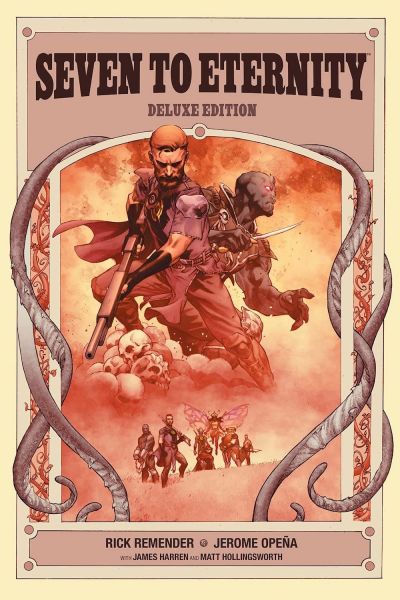
Seven to Eternity is worth reading if only to feast your eyes on Jerome Opeña’s lush and intricately detailed art. Rick Remender has created a fantastical world that blurs the lines between sci-fi and fantasy with its super-powered warriors, floating cities, otherworldly realms, and bizarre creatures — and Opeña’s artistry, combined with Matt Hollingsworth’s colors, are more than a match for anything Remender conjures up. (The sketchbook in this deluxe edition only further exhibits Opeña’s impressive skill and attention to detail.) Story-wise, Seven to Eternity works on several levels. In its simplest form, it’s the quest of a dying man to avenge his father and defend his family from a god-like tyrant. But over the course of seventeen issues, Remender also lays bare mankind’s proclivity for self-delusion and justification, hatred, and blind adherence to ideology. And on another level still, it explores the legacies that fathers leave for their families, both good and bad. (If you’ve read Remender’s excellent Black Science, then you know he has a thing for difficult, dysfunctional father characters.) Seven to Eternity is grim and tragic throughout, with its protagonist pushed to various moral and spiritual extremes and compromises; there were a few times when I was tempted to put it down because of the direction I thought it was heading. But Remender manages to wrap things up in a suitable and satisfying manner — though it might ruin the rest of your day.
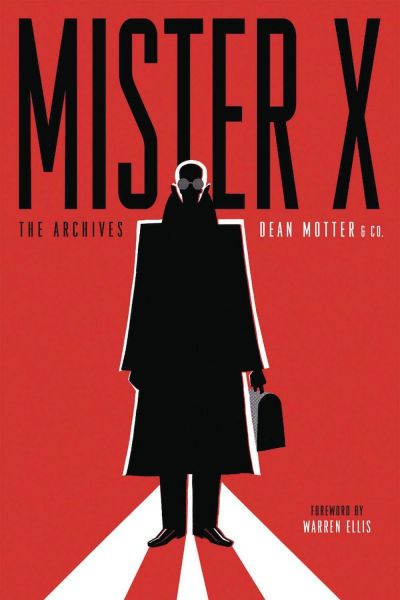
I’ve been fascinated by Dean Motter’s Mister X ever since I saw an ad for its CD-ROM in the pages of MacWorld back in the mid ’90s. Considered groundbreaking at the time, Mister X became (in)famous for its oft-delayed publication, behind-the-scenes drama, and revolving door of writers and artists that included the Hernandez brothers (Love and Rockets), Seth, and D’Israeli. Published in 2008 by Dark Horse Comics, The Archives collects the original Mister X run from the ’80s along with some other odds and ends, and it’s a very uneven work, artistically, narratively, and tonally (as you might expect given the aforementioned factors). Motter’s original premise is intriguing: Designed according to the theory of “psychetecture,” Radiant City was supposed to be a utopia. But its very architecture is now driving the citizenry insane, and the enigmatic Mister X — who claims to be Radiant City’s original architect — is desperately trying to save it without going mad himself. The original Mister X run is definitely a case where you can’t judge a book by its cover; the original series’ stunning covers, created by the likes of Dave McKean (The Sandman), Paul Rivoche, and Motter himself, suggest a far stranger and more interesting world and storyline than even the Hernandez brothers (with all of their delightfully detailed work) were able to create.
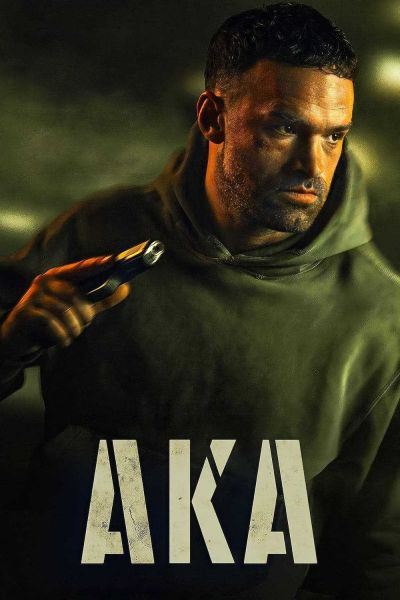
I went into this knowing nothing about it other than it starred actor/stuntman Alban Lenoir, who previously starred in the Lost Bullet films (which I really enjoyed). Lenoir plays a special agent tasked with infiltrating a vicious gang and flushing out a terrorist leader. Naturally, things get messy when he starts earning the respect of his new comrades and befriends the gangster’s lonely son, which complicates his loyalties and risks compromising his mission. The opening scene made me think that AKA was going to be something along the lines of Extraction — and then a final, shocking twist made it clear that it would be a much darker film. AKA has more on its mind than mindless action sequences — e.g., political corruption, France’s legacy of colonialism — and I appreciate action films that dig a little deeper to explore the tragic, traumatic nature of violence. But AKA is so dour and glum that it’s hard to stay engaged or care about what’s happening even with the heavier themes.
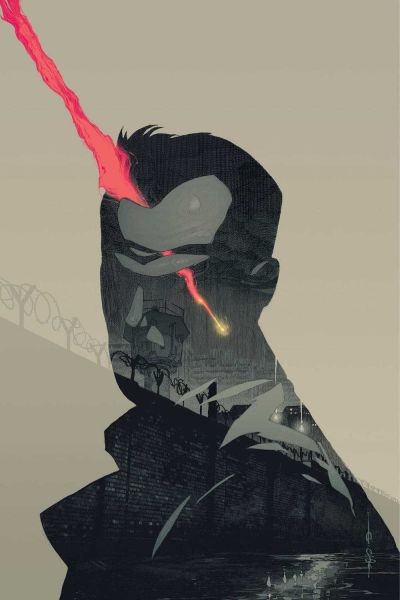
While I was reading Strange Skies Over East Berlin, I realized that I’d actually read it before. Which might suggest that this series is ultimately forgettable. I wouldn’t go so far as to say that. But I will say that I wanted to like this more than I did. An American spy living undercover in East Berlin is given a new mission: track down a mysterious alien vessel that crashed behind the Iron Curtain. But what he ultimately discovers could spell doom for the entire human race. I really dug the series’ premise of a world-weary spy forced to reflect on his morally dubious career after encountering bizarre alien phenomena; imagine John le Carré (The Spy Who Came In From the Cold) writing an episode of The X-Files. Sadly, the series barely scratches the surface of its potential. Some that’s undoubtedly due to its short length, at just four issues. Brevity and efficiency are good things, but in this case, the resulting storyline and characters are just a little too thin, and left me wanting more.
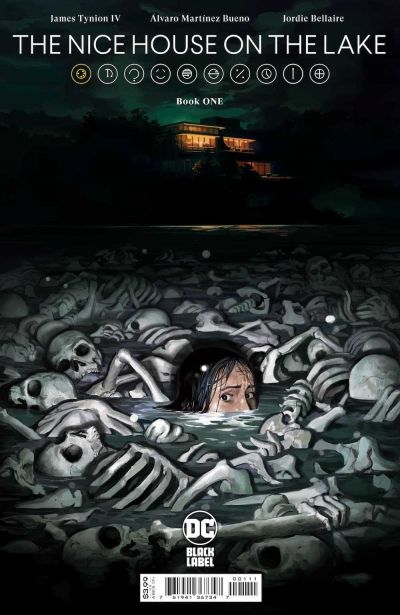
Ten friends, all dealing with the various trials and tribulations of adulthood, are invited to a getaway at a remote lake house by their mutual friend Walter. Everything seems perfect: the house is beyond luxurious, the lake is gorgeous, and Walter has planned a fun-filled week for everyone. But then they discover the awful truth. The rest of the world has come to a violent end, they’re the only surviving members of humanity, and their friend Walter is, in fact, a horrific alien “flesh tornado” who’s been secretly manipulating their lives and memories for years. I love the series’ premise — Tynion describes it as “The Big Chill as a sci-fi horror story” — and Álvaro Martínez Bueno’s moody artwork is consistently gorgeous. I was thoroughly engrossed, but unfortunately, the ending’s a bit underwhelming. That’s mainly because The Nice House on the Lake’s premise is so interesting and Tynion builds it up so well (with several twists and revelations thrown in for good measure) that any resolution would probably be on the unsatisfying side.
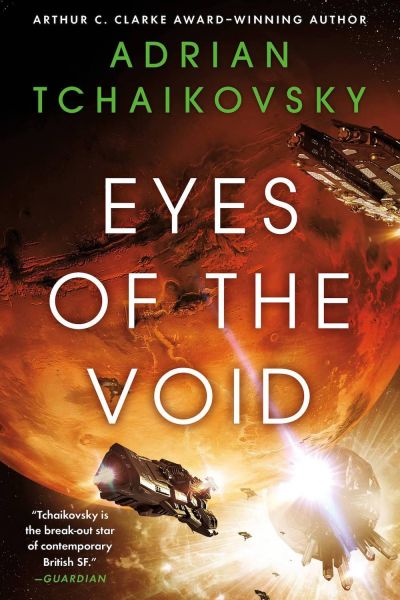
I didn’t enjoy this as much as the trilogy’s first book — 2021’s Shards of Earth — mainly because it suffered from being the middle book. A good deal of Eyes of the Void felt like Tchaikovsky was just biding his time and shuffling things around in preparation for the third book, Lords of Uncreation. As such, it lacked some of the urgency and momentum that I enjoyed so much in Shards of Earth. That said, the book’s fourth and final section — “Criccieth’s Hell” — ended it on a strong note, with Tchaikovsky once again unleashing his creative prose to describe the horrors of the galaxy’s most inhospitable planet as well as the unsettling discoveries that Idris Telemmier makes while plumbing the depths of “unspace” (the bizarre layer of (un)reality lurking just beneath real space) for clues on how to stop the world-destroying Architects.
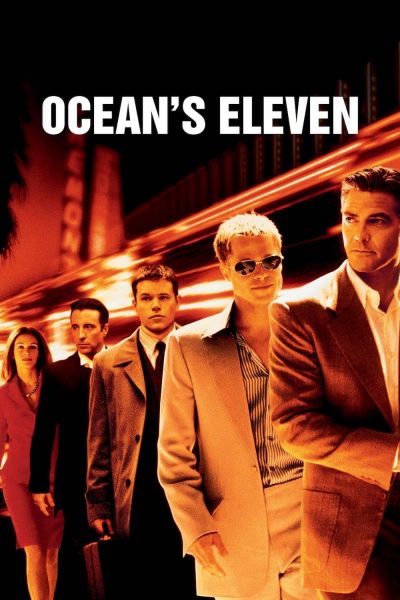
A favorite of our family’s, and one of those movies that we can watch practically anytime, it’s that smooth and stylish. Watching it this time, however, I was a bit more bothered by how Julia Roberts’ character is essentially window dressing, a pawn in the game between two men. But the film’s focus is obviously on the heist, and there it shines, as a star-studded cast — including George Clooney, Brad Pitt, Matt Damon, Don Cheadle, Carl Reiner, and Elliott Gould — develop an increasingly complex plan to knock over three casinos in one night. As with all heist films, it doesn’t all become clear until the very last minute. In the hands of a lesser director, the film’s “how they did it” sequence might be cheesy, even insulting to our intelligence. In the hands of Steven Soderbergh, however, they feel like a delightful surprise regardless of how many times you’ve see them.

The term “deconstruction” has become something of a four-letter word in some Christian circles, tantamount to heresy and apostasy as people reject or reinterpret the beliefs of their youth. But after watching Amazon’s Shiny Happy People, a four-part documentary on the Duggar family (of 19 Kids and Counting fame), I don’t really blame anyone who wants to deconstruct that sort of background. The series begins with the Duggars’ rise as unlikely reality TV stars as well as the bombshell that the oldest Duggar child, Josh, had sexually molested his sisters years before his family became a TV sensation. (Also discussed is father Jim Bob’s efforts to cover up Josh’s abuse.) From there, the series delves into the Institute in Basic Life Principles (IBLP), a Christian organization for which the Duggars, because of their fame, soon became chief ambassadors. Founded by Bill Gothard in the ’60s and accused of being a cult, the IBLP teaches extremely patriarchal views concerning the family and parenting — and has become embroiled in its own sex scandals. Shiny Happy People covers a lot (e.g., the Duggars’ family life, Josh Duggar’s case, the pitfalls of reality TV, IBLP’s teachings, Gothard’s own abusive behavior) and doesn’t always juggle its various themes successfully. But the extensive interviews with Duggar family members and friends, as well as former IBLP members, combined with archival IBLP footage, makes for a very compelling, and at times, horrifying watch — especially if, like my wife and I, you grew up in a conservative Christian environment. (Neither of us grew up with IBLP teachings. Nevertheless, we heard a lot of familiar language and ideas in the series’ four episodes.)

The Saturday morning before the Fourth of July seemed like the perfect time to watch the G.I. Joe movie, and in my pajamas natch. (All I was missing was a bowl or two of Lucky Charms.) As with any nostalgia-inspired viewing, the mileage definitely varies. A lot of the movie’s pretty awful, even beyond the spotty animation (e.g., the various “ethnic” accents and racial stereotypes, the emphasis on completely forgettable new characters). And the revelation that an ancient reptilian civilization called Cobra-La was — surprise! — the force behind Cobra all along is absolutely ridiculous. But also kind of awesome, albeit in a “I still remember what ’80s Saturday morning cartoons were like” sort of way, and I wonder how kids back then reacted to the movie’s Lovecraftian biological monstrosities. (My son was a bit incredulous that my parents would’ve let me watch this when I was his age.) I’m under no illusions, however: if I didn’t have any ongoing interested in the G.I. Joe franchise (thanks, in large part, to the various comics), I never would’ve watched this. That said, it’s still way more entertaining than all of the live-action G.I. Joe movies combined.